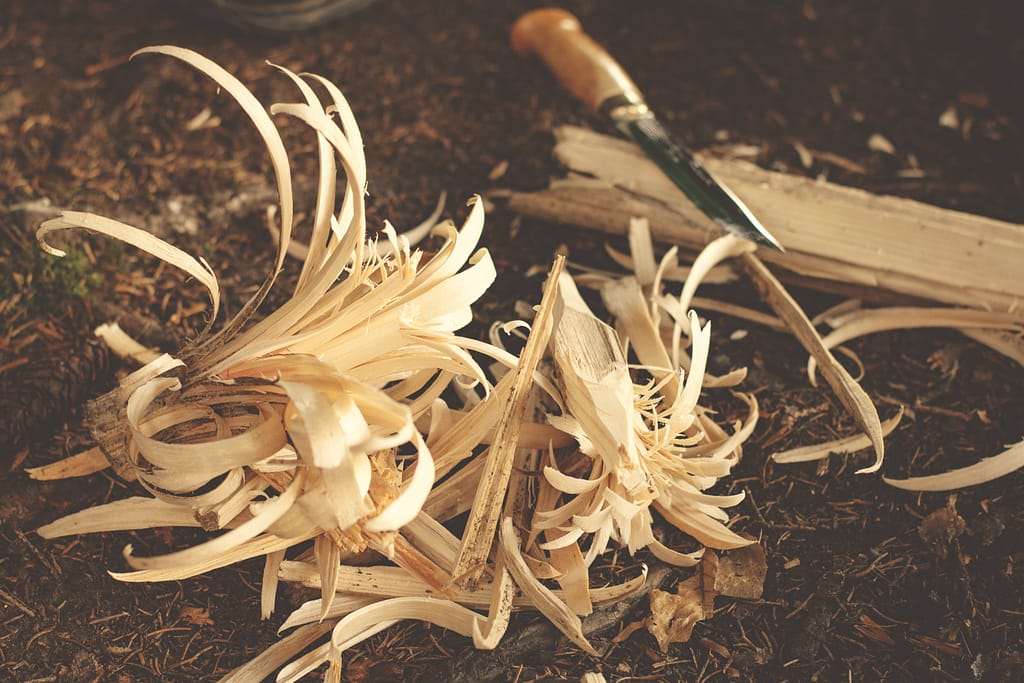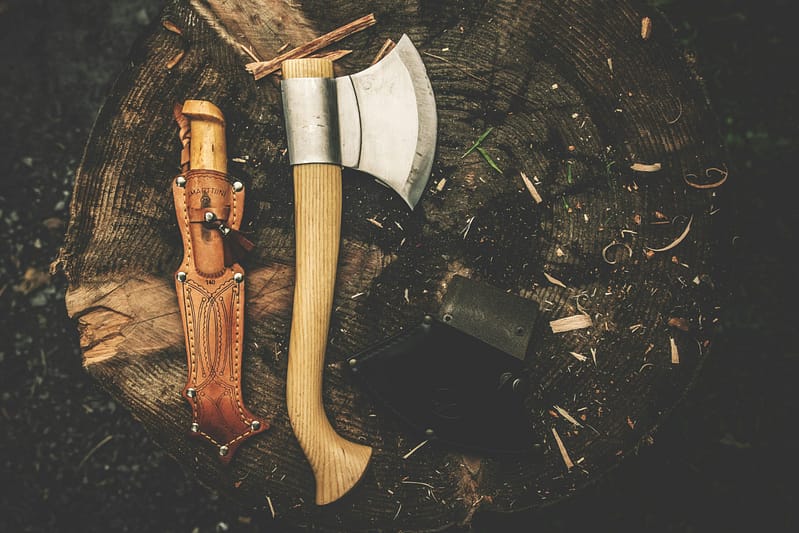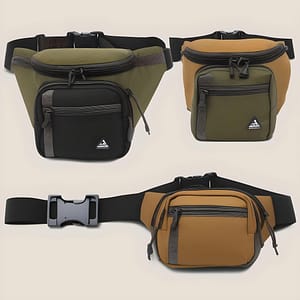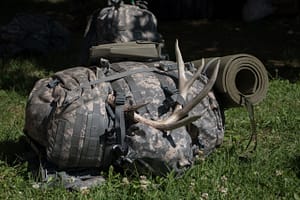In this blog post, you will discover the essential skills and techniques needed for outdoor survival through the lens of a young man with a sense of humor. Whether you’re a camping enthusiast or simply looking to enhance your wilderness skills, this article is your ultimate guide to mastering bushcraft.
What is Bushcraft
Bushcraft is the art and skill of thriving in the wilderness through knowledge and practical application of various outdoor survival techniques. It involves using natural resources, improvisation, and self-reliance to navigate and sustain oneself in the wild.
Bushcraft – Crafting Shelter
In bushcraft, your living quarters aren’t just about sawing logs and thatching roofs; it’s about wisely using the environment to your advantage. To craft a refuge in the wild, you must blend ingenuity with practicality, creating structures that insulate you from the chilly whispers of nature. Whether it’s a lean-to, a debris hut, or an elevated platform, always choose a site that offers natural protection and take into consideration factors like wind direction and water runoff. Every knot, every branch placement counts — your survival shelter isn’t just a construct; it’s a lifesaver.
Choosing Location and Materials
In the art of bushcraft, your first step is selecting a prime spot that guards against unpredictable elements, maximizing natural defenses. Your environment dictates your success.
Once you’ve pinpointed the ideal location, it’s time to scavenge. Look for robust, versatile materials — nature’s inventory. The integrity of your construction hinges on them.
Every survival skill is honed by situational adaptability, crafting security from the chaos of the wild.
Gathering isn’t just about finding what you need; it’s about sustainability. Go for resources that leave minimal impact (like downed wood instead of live branches), ensuring the wilderness stays wild and thriving. Your choices matter.
Building Techniques
Building a strong foundation is the bedrock of effective bushcraft building. Your structure’s durability and your comfort are at stake.
To start, you need a comprehensive knowledge of knots and lashing techniques. Knots like the square knot, bowline, and clove hitch are essential for constructing frames, securing shelters, and even for creating tools and utensils. These are the sinews that bind your structure; without proficiency here, your shelter could quite literally unravel. Choosing the correct knot for each application ensures stability and strength in your bushcraft endeavors.
Furthermore, understanding the properties of different woods plays a crucial role. Some woods are better at bearing weight, others excel in flexibility, and some can resist moisture better. Applying this knowledge means you can pick the right wood for the right part of the structure. For example, using green wood for the frame can offer durability, while dried branches might be better suited for less load-bearing parts, like a roof.
Finally, your building techniques need to mesh with the environment’s provisions. You may have to create a debris shelter when faced with a sparse forest, whereas a dense woodland could offer ample materials for a classic A-frame. Adaptability is key; always be willing to modify your design based on available resources and the immediate environment. This flexibility ensures you can craft a refuge from nature’s assets, irrespective of the circumstances, underpinning your survival with solid, dynamic building practices.

Bushcraft – Securing Water
Hydration is non-negotiable – it’s a pillar of survival that can’t be compromised. In the wilderness, locating a water source is the first step, but remember, not all water is potable immediately.
Refinement is key; whether using boiling, chemical treatments, or solar stills, ensuring water safety is paramount. Untreated water can host pathogens, so careful purification is a bushcraft fundamental, turning a risky hydration source into a life-saving elixir.
Know your methods – chemical purification, filtration, and boiling are your arsenal for securing safe water. Each technique comes with its trade-offs and applications, tailor your approach to the resources at hand.
Finding Sources
Before you can purify water, you have to locate it – and not all sources are created equal.
- Look for wildlife: Animal tracks and bird flight paths can hint at nearby water sources.
- Gather intel from vegetation: Lush greenery often thrives near water; follow the green.
- Survey the land: Low-lying areas tend to collect water. Keep your eyes peeled for dips and valleys.
- Listen: Sometimes, the sound of a stream or river can guide you to water.
- Use technology: A map or GPS can point out water sources if you’re prepared with the right gear. Once you’ve stumbled upon a potential water source, assess its suitability.
Treading carefully around water sources is crucial – they’re lifelines in the bush, vital for survival but also vulnerable to contamination by our very presence.
Purification Methods
Boiling is the go-to method for water purification in the wild. Heat water for at least one minute at a rolling boil to kill most pathogens.
When boiling isn’t an option, chemical purifiers like iodine or chlorine come into play. These need time to work, so follow their instructions precisely to avoid a stomach rebellion. But remember, they don’t nix all toxins, and some waterborne culprits, resistant to chemical purifiers, may yet lurk in your liquid lifeline. Chemical treatments can also leave a residual taste that’s not to everyone’s liking, so consider pairing them with flavor neutralizers or a secondary filter.
Alternatively, filtration devices have upped their game significantly. Squeeze filters, pump filters, and gravity filters stand ready to strip out critters of various sizes, including bacteria and sometimes viruses. Before investing in a filter, scrutinize its specs to ensure it can tackle the particular threats you might encounter in your water source.
Finally, when you’re literally trying to survive the elements, UV light purifiers swap out chemicals for rays. Just swish these gadgets around in your water and ultraviolet light starts a molecular-level smackdown on harmful microorganisms. For this tech to be effective, water has to be clear, so pre-filtering may be needed. And since they’re battery-operated, having a power backup plan is as smart as knowing your cardinal points. Keep in mind that while these methods are effective, they may not remove chemical pollutants, so it’s always best to start with the cleanest source possible.

Bushcraft – Foraging and Hunting
Mastering the art of foraging demands a keen eye for edible flora and a deep knowledge of local ecosystems. Whether you’re harvesting leaves for tea, picking nutrient-rich berries, or digging for tubers, the key is knowing what’s safe to eat. Careful identification avoids poisonous plants and maximizes your nutrient intake, crucial when you’re miles from the nearest grocery store.
When it comes to hunting, it’s not just about snagging a meal; it’s about understanding animal behavior and respecting the balance of nature. Knowledge of tracking, trapping, and the ethical taking of game ensures that survival doesn’t come at the expense of the environment.
Edible Plant Identification
Knowing your greens could mean the difference between a nourishing meal and a poisonous mishap. Out in the wild, you can’t take any chances.
- Understand the Basics: Learn the universal edibility test before foraging.
- Study Safe Plants: Familiarize yourself with common edible plants in different habitats.
- Carry A Field Guide: Have a region-specific plant guide as a handy reference.
- Avoid the Deadly: Keep a list of look-alikes to avoid mixing up edible with toxic.
- Practice With Experts: Join foraging workshops and walkabouts to gain practical experience. Keep a practiced eye on distinguishing features like leaf shape, color, and habitat.
Respecting nature’s pantry calls for sustainable harvesting – take only what you need.
Trapping and Tracking Skills
To secure a meal in the wilderness, you’ve gotta be slick—trapping and tracking are crucial. Understanding animal trails, scat, and sign gets you the upper hand. Traps require finesse and knowledge of animal pathways to be effective.
Nailing the art of silent movement is key. It lets you observe without spooking your quarry.
Watch how the pros do it by studying various trapping techniques and strategies. You need to think like the critter you’re tracking—anticipating their next move is half the battle. Choose your trapping spots based on high traffic areas where animals are most likely to pass through.
Snares, deadfalls, and fishing rigs need to blend with nature. They gotta be discreet yet effective to outsmart wildlife. And remember, balance is everything—practice catch and release to maintain the environment. We’re not out here to take more than we need, so tracking and trapping come with a massive dose of respect for the wild things we share this planet with.
Bushcraft – Navigating the Wilderness
Navigating the backcountry means mastering the use of both compass and topographic maps—a dynamic duo in the world of orientation. Identifying landmarks and reading terrain becomes second nature with practice.
In this GPS era, the savvy outdoorsperson still values traditional navigation skills. Knowing latitude, longitude, orienting a map to true north, and triangulating position, are invaluable when electronics fail or are unavailable.
Embracing the “lost art” of map reading and compass skills can make the difference between a true explorer and just another tourist.
Natural Navigation Basics
Navigating without a compass or GPS might seem daunting, but nature provides its own set of landmarks—if you know where to look. Sun position, star patterns, and even the behavior of plants and animals can hint at your direction of travel.
It’s crucial to grasp the basics of the sun’s movement. Generally, it rises in the east and sets in the west, with slight seasonal variances you should be aware of.
By night, the North Star (Polaris) serves as a reliable indicator in the Northern Hemisphere; it remains virtually fixed above the North Pole. Understanding how to locate it amidst the constellations could mean the difference between losing your bearing and confidently navigating through the night.
Mastering the art of reading nature’s indicators, such as the prevailing winds, river currents, and the shape of trees—which often grow denser on the southern side in the northern hemisphere—strengthens your natural navigation skills. With practice, you can decipher these natural clues effortlessly, making you a more proficient and self-reliant adventurer in the wild. Remember, this is about embracing an ancient skill set, becoming attuned to nature’s subtleties, and not just “following” technology but interacting with the environment.
Map and Compass Mastery
Navigating untamed terrains calls for adept mastery of traditional tools: a map and compass. These timeless navigational aids can be lifesavers when GPS signals falter or when trekking off-grid.
To begin, familiarize yourself with topographical maps. These maps are a goldmine of green lines, contour patterns, and symbols representing the lay of the land. Acquiring the skills to interpret these features transforms a two-dimensional piece of paper into a vivid guide through the wilderness. Combine this with a compass, and you have the means to pinpoint your position and plan your route with precision.
Knowing how to align your map with the surrounding terrain is crucial. By orientating the map with the compass to true north, you synchronize your perspective with reality. This simple yet critical skill enables seamless transitions from map-reading to land navigation. It requires practice but becomes second nature to the seasoned bushcraft enthusiast.
Finally, proficiency in triangulation will solidify your navigational prowess. This involves using a compass to take bearings from known points on the map to your current location in the landscape. Extraordinarily useful when landmarks are visible, triangulation can pinpoint your precise position, which is invaluable when needing to make smart navigational decisions or communicating your whereabouts.
Bushcraft – Conclusion
This article covers various essential skills and techniques for outdoor survival. Whether you’re a camping enthusiast or someone looking to enhance their wilderness skills, this blog post is packed with valuable information and tips. So, grab a cup of coffee and get ready to embark on an adventurous journey into the world of bushcraft!





